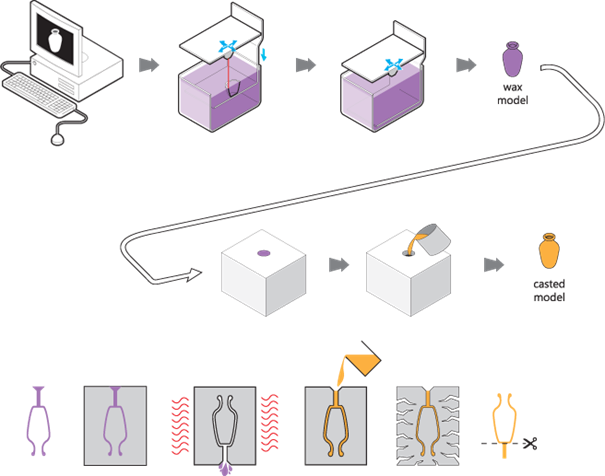
In addition to an existing option to print in 14K gold, you can now output your creations in three colors (yellow gold, rose gold, and white gold) and you can do it in both 14K and now 18K gold.
Jewelry designers are increasingly turning to 3D printing to build complex, intricate pieces, and now 3D printing high-quality gold rings, bracelets, necklaces, and earrings with an 18K gold option is sure to prove popular.
Materialise says that there is a slight color difference between objects printed in 14K and 18K, and that color difference is caused by the amount of gold used in each process. They say 14K gold contains 58.5% pure gold, but as 18K gold contains 75% pure gold, 18K gold items will both be heavier and have a slightly different color than their 14K gold counterparts. Due to that difference, 18K white gold will appear more yellowish than 14K white gold.
Pure gold is exceedingly soft. So soft, in fact, that it’s rarely used in jewelry and jewelers use various gold alloys which are called ‘karat gold.’
The Karat (K) designations refers to the number of parts, by weight, of gold in 24 total parts of alloy. The higher the percentage of pure gold, the higher the karat. Pure gold is 24K, 18K gold is 18 parts fine gold and 6 parts metal, and 14K gold is 14 parts fine gold and 10 parts metal.
It works like this: a wax cast of your item is 3D printed and then covered in a fine plaster, once the plaster solidifies its place in an oven to burn out the wax, and then gold is poured into the empty cast to create the final item.
As a last step, items can be polished and finished manually to achieve a desired final look.
Wax 3D printing for jewelry — or lost wax casting — uses a type of stereolithography material made from a wax-like resin. Support structures can be printed along with the model to provide strength. The support structures are automatically generated, and then removed manually after the printing process is complete. Once the support structu
One or more wax sprues will be attached to a model, and the sprue is then attached to a wax ‘tree’ of other models. This tree is placed in a flask and covered in a fine plaster. When the plaster solidifies, it forms the mold for casting the gold.
Once the plaster mold is placed in an oven and heated for several hours, no wax remains. Molten gold is poured in to fill the cavities left by the wax, and once the gold has cooled sufficiently, the plaster mold is broken and the gold objects are removed by hand.
Models can then be filed and sanded to remove the sprues prior to sanding, polishing, or sandblasting.
Do you design jewelry? Do you think you’ll use the new 18K gold option from i.materialise? Let us know in the 18K Gold 3D Printing forum thread on 3DPB.com.